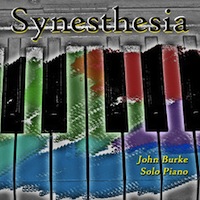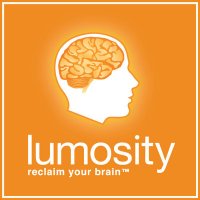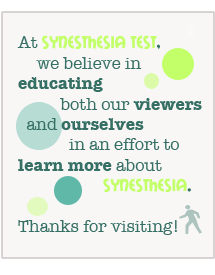John Burke’s Synesthesia – Musical Colors Test
 One of the forms of synesthesia that I’ve always found to be particularly interesting and interestingly romantic is sound to color synesthesia. Whether it’s the fictitious visions of legendary composers crafting their greatest works in dancing colors or the common allure of synesthesia, there’s something there that tickles my fancy. So, when I came across solo pianist John Burke’s website, with his album – titled Synesthesia – I knew I had to share. What’s more is that he’s actually provided all of you sound (or music) to color synesthetes with a cool little test involving songs from his album. Let’s take a look!
One of the forms of synesthesia that I’ve always found to be particularly interesting and interestingly romantic is sound to color synesthesia. Whether it’s the fictitious visions of legendary composers crafting their greatest works in dancing colors or the common allure of synesthesia, there’s something there that tickles my fancy. So, when I came across solo pianist John Burke’s website, with his album – titled Synesthesia – I knew I had to share. What’s more is that he’s actually provided all of you sound (or music) to color synesthetes with a cool little test involving songs from his album. Let’s take a look!
First off, I have to say that I love the album’s song nomenclature for its simplicity alone. Each song, as you may have guessed, is named with a color. When you consider the actual naming convention, the album takes a completely different life. In composing each piece, Burke set out to tap into the listener’s subconscious, meticulously manipulating his hammers and strings in such a way that would actually invoke a sense of a given color in the listener’s mind. The color? The composition’s title, of course. Cobalt. Sage. Crimson. Violet. Take your pick. There are 10 compositions in total.
The Music to Color Test
Alright, you’re here for a test, so a test you shall get. The premise behind sound to color synesthesia is that certain sounds invoke a given color in the synesthete’s mind. Typically, we might say that the sounds (or triggers) are more generic and defined, rather than multiple-minute compositions, but for our purposes, Burke’s compositions will be a bit more compelling. Just a bit.
Anyways, on this page, where Burke describes his idea for the album, you can listen to three of the selections. The challenge, as Burke has prescribed on the page, is to listen to the compositions and then compare any color visualizations that you may have to the piece’s title. Now, obviously, you’ll see the title first. However, the exact colors won’t be immediately recallable. Give the songs a listen, and if you have any sound to color experiences, find an exact representation of the title color and compare. Who knows; you might surprise yourself!
More Music & Testing
If you have any synesthetic experiences with the three available selections, you might consider purchasing the album and experimenting with the other compositions. Another option is trying individual pieces. Even if your perceived colors don’t match up with the song titles, it might be interesting to compare them with those of other users. So, yeah, I strongly encourage sharing. 🙂
Results or not, I do recommend adding the album to your collection. Not only is it a great example of synesthesia as an artform, but it’s also quite enjoyable. I’m partial to ‘Indigo’, in particular. Very relaxing music, all around. Take a listen and let me know what you think!
That’s all for now! Again, if you get a chance to listen to John Burke’s free selections, let us know which colors, if any, you involuntarily visualize. We’re eager to hear from you! See you next time! Happy listening!
 Have you ever talked to a friend or family member and realized that your brain activity is – to some degree – atypical? Don’t fret; you’re not alone. Whether your
Have you ever talked to a friend or family member and realized that your brain activity is – to some degree – atypical? Don’t fret; you’re not alone. Whether your 



